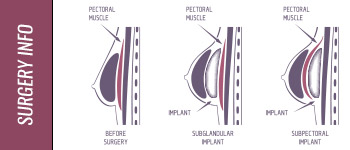JENNIFER KIMBERLEY
Described simply, liposuction is the removal of fat cells from specific areas of the body by suctioning them out through a tube. Other words for liposuction are “lipoplasty” and “suction lipectomy”.
Some information about fat cells
As children, we develop fat cells in a certain number and of a certain size. Over-feeding or under-feeding a child will influence the number of fat cells developed and that number will remain pretty constant all our lives. But the size of the cells can increase at any time later in life. So when we over-eat and gain weight, we aren’t creating more fat cells; we’re enlarging the ones we have. Dieting will shrink them again, giving us the overall proportions our body originally had.
As we grow older, even though we may not be overweight, certain parts of the body may retain fat, such as the lower belly, thighs, chin, or upper arms. Liposuction is an intervention to remove excess cells from these areas, and they will not grow back.
Quick facts about liposuction
- It’s a surgical tool for re-contouring the body, not a tool for reducing overall weight.
- It’s performed in an out-patient facility or clinic with minimal blood loss, local anaesthetic, and no stitches.
- Recovery time varies with the person and particular surgery done, and ranges from 3 or 4 days to a couple of weeks.
- Insurance companies don’t cover the cost unless it’s done as reconstructive surgery after an accident or illness.
- There is no standardized training required for a surgeon to perform liposuction. Therefore it’s best to have it done by a cosmetic surgeon or dermatologist, and in a clinic, where there’s more equipment available than in a doctor’s office. And do your homework – choose a surgeon who has plenty of prior experience and belongs to the American Society of Plastic Surgeons (ASPS).
Candidates for liposuction
Any healthy person over the age of 18 can have liposuction. Although age in itself is not a primary factor, older skin tends to be less elastic, which means that loose skin folds may remain after the underlying fat is removed. This may require further cosmetic surgery to correct, such as a tummy tuck.
Sometimes overweight people will adopt a regimen of diet and exercise that brings their weight down to within 10 or 15 pounds of their desired weight, but they find that certain areas of the body stubbornly retain more fat than other areas. This is often a scenario for successful liposuction.
Some conditions preclude liposuction, such as diabetes, any significant lung or heart disease, and liver failure.
As with any surgery, liposuction carries some risk. Your doctor will decide whether you’re a good candidate medically, but besides that, you have to accept the risks and have a realistic expectation for the outcome.
- Infection is possible, though infrequent.
- If you’re an older person, perhaps your skin won’t tighten around your new shape as readily or as much as you’d hoped.
- There will be some post-op swelling and bruising, perhaps even pain rather than mere discomfort, and a period of rest will be required. Every person is different, so no firm predictions can be made about this.
- If your underlying desire is really to lose weight rather than re-shape your body, then delay any liposuction until you’ve tried a strict diet-and-exercise regimen.
- Look at yourself honestly to see if perhaps you’re being too critical of yourself and under-valuing what you have. If you were to refresh your wardrobe, restyle your hair, get a make-up consultation, make regular visits to a gym or even just use home equipment for exercise, might you really be quite attractive? Do we all need to look like movie stars?
Types of liposuction
Since liposuction was invented in 1974, techniques have become more sophisticated and in 1985 the tumescent technique was developed, which is mostly used today. There are three types of liposuction:
Basic or standard liposuction, where a small amount of fluid is injected into the area. In this fluid are lidocaine as a local anaesthetic, epinephrine to contract the blood vessels, and salt to make the fluid saline, matching body fluids. The fluid helps loosen fat cells and reduces bruising.
Tumescent liposuction, where a large amount of this fluid is injected into the site. The large quantity makes space between the muscle and the fatty tissue, making more room for the tube, or cannula, which removes the fat cells.
Ultrasound-assisted liposuction (UAL), a type of tumescent liposuction, where a different cannula is used, which vibrates in response to ultrasound, causing the fat to emulsify or liquefy before it’s removed.
The second two methods take about an hour longer, as the fluid needs to percolate for that time before the cannula is introduced.
There have been recent attempts made at a non-surgical liposuction, where an ultrasonic device is used externally to melt the fat under the skin. However, all studies have deemed it to be quite ineffective.
In all of the 3 above procedures, the incision is small (about a quarter of an inch). Fat cells are suctioned out through the cannula into a canister. When it’s finished, the plastic surgeon will examine the treated area, perhaps suction out a little more, and you can go home that day.
Some plastic surgeons now use a motorized cannula, devised in 1992, which moves rapidly back and forth and allows for greater precision. No doubt there will continue to be improved equipment and new techniques. Recently men have begun taking advantage of liposuction and the most common areas for males are the neck, love-handle area, and abdomen.
If you do go ahead with this procedure, you should maintain regular exercise and a healthy diet, so as to avoid further fat accumulation. Although the suctioned fat cells are gone for good, their neighboring cells could still enlarge and create disproportionate bulges that might require a second liposuction procedure.
Read more articles about liposuction and body contouring.




